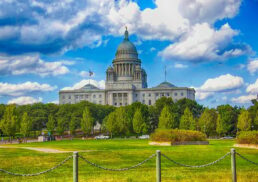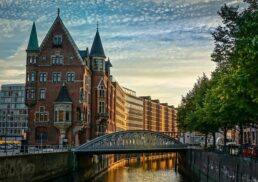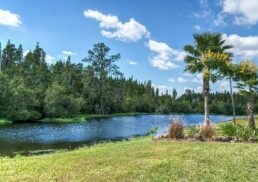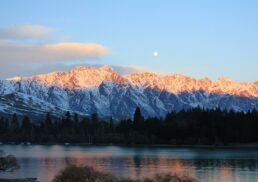The France Valley of Loire, known as the ‘Garden of France,’ is renowned for its stunning chateaux, lush vineyards, and rich history. Located just a short trip from Paris, this region stretches from Centre-Val de Loire to Pays de la Loire and offers a wealth of cultural and natural wonders. In this guide, we’ll explore the top attractions that make the Valley of Loire a must-visit destination.
Table of Contents
Key Takeaways
The Loire Valley, located in central France and spanning from Centre-Val de Loire to Pays de la Loire, is renowned for its historical chateaux, picturesque vineyards, and significant natural landscape along the Loire River, a UNESCO World Heritage Site.
Key attractions in the Loire Valley include the Château de Chambord, Château de Chenonceau, and Château de Villandry, each offering unique insights into France’s royal history, Renaissance architecture, and meticulously designed gardens.
The region is also celebrated for its diverse wine production, outdoor activities amidst its varied landscapes, and a vibrant calendar of festivals and events that reflect its rich cultural heritage.
Introduction
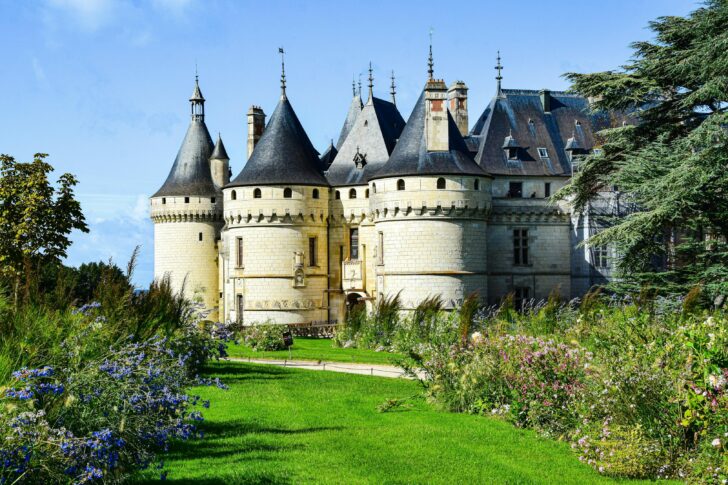
Nestled in the heart of France, the region known as the Valley of Loire is a treasure trove of cultural heritage and natural wonders. This gem is located in central France, extending from the regions of Centre-Val de Loire to Pays de la Loire, and is a mere stone’s throw from the bustling city of Paris, about 130 kilometers to the southwest. The valley stretches for approximately 400 kilometers towards the shimmering Atlantic coast, offering a landscape that has inspired poets, painters, and princes alike.
However, let not the name deceive you. A common mistake is to confuse this enchanting valley with the French department of Loire, but fear not, for their distinct identities are as rich and varied as the history they each hold. The Loire Valley is a canvas painted with the strokes of history, its chateaux standing as monuments to a bygone era, its vineyards bearing the fruits of centuries-old traditions. With words alone, one can hardly do justice to the splendor that awaits in this region.
Where is the France Valley of Loire?
The Loire Valley, a verdant expanse cradled in the heart of France, is often lovingly referred to as the Garden of France. The valley encompasses the regions of Centre-Val de Loire and Pays de la Loire, stretching from Maine-et-Loire to the et Loire, where the history-laden cities of Tours and Saumur stand as sentinels along the Loire River. The châteaux, those great architectural monuments of France’s past, are scattered like jewels across this picturesque landscape.
From the elegant Château de Chambord to the historic streets of Orléans, the Loire Valley is a patchwork of cultural and natural wonders that beckon travelers from around the globe. Its proximity to Paris makes it an accessible retreat from the city’s hustle and bustle, while its extension towards the Atlantic coast invites one to explore its vast and varied terrain. Understanding the valley’s geography is key to appreciating the rich tapestry of experiences it offers, from the grandeur of its châteaux to the tranquility of its vineyards.
How to Get to the Loire Valley
Journeying to the Loire Valley is an adventure in itself, with various paths leading to this heartland of French heritage. If you’re departing from Paris, a car will whisk you away to the valley in about three hours. Consider the scenic route to immerse yourself in the French countryside. For those traveling from the UK, the Eurotunnel or ferry services offer a gateway to the continent, with travel times varying based on your port of choice.
Alternatively, the high-speed TGV connects Charles de Gaulle Airport directly to the cities of Tours and Angers in a swift 1.5-hour ride, while local trains link these hubs to charming towns like Saumur in mere minutes. For international visitors, flights to Tours Loire Valley Airport, Nantes Airport, or Poitiers Airport provide convenient access to the heart of the valley, connecting both to major European cities and beyond.
The Loire River and Its Significance
The Loire River is not merely a body of water but the lifeblood of the region, its ebb and flow shaping the landscape and the lives of those who dwell by its banks. Since the year 2000, a 280 km stretch of the river valley, from Sully-sur-Loire to Chalonnes-sur-Loire, has been honored as a UNESCO World Heritage Site, a testament to its exceptional degree of natural beauty and cultural significance. The river and human intervention have together weaved a ‘living cultural landscape’ that stands as a symbol of harmony between nature and civilization.
Historically, the Loire River served as a vital trade route, enabling the transport of goods and, notably, the esteemed wines of the valley, to far-reaching destinations. This river has been a conduit of prosperity, its waters a mirror reflecting the grandeur of the châteaux and the richness of the vineyards that line its shores. The Loire’s influence on the region is profound, carving out a legacy that is both tangible in stone and architecture and intangible in the spirit and character of Val de Loire.
Must-Visit Chateaux in the Loire Valley
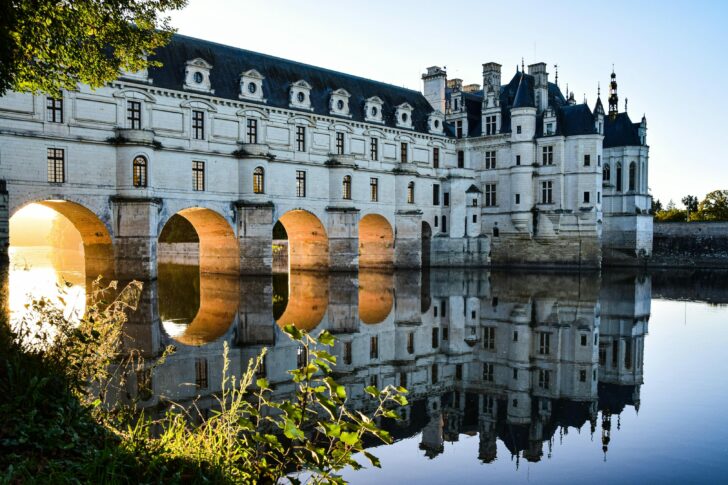
The Loire Valley, synonymous with opulence and elegance, is home to some of the most magnificent castles in the world. These chateaux, with their storied walls and manicured gardens, are the crowns of the region. While there are many to choose from, including Amboise, Blois, and Chinon, there are three that stand out as essential visits: the Château de Chambord, the Château de Chenonceau, and the Château de Villandry. Each offers a unique glimpse into the grandeur of France’s royal and noble past, and they are among the greatest architectural monuments to be found not just in the Loire but in all of France.
Château de Chambord
Château de Chambord is not merely a castle; it is a masterpiece of Renaissance architecture, commissioned by King François I as a potent symbol of his power and influence. Though intended as a hunting lodge, the king spent mere weeks here, leaving behind a monument that has captivated onlookers for centuries. The château’s survival through the tumultuous times of the French Revolution and its role as a safe haven for precious artworks during World War II speak volumes of its resilience and historical importance.
One cannot visit Chambord without marveling at the double helix staircase, a design so ingenious that it is believed to have been inspired by the great Leonardo da Vinci. This architectural wonder is emblematic of the château’s grandeur, which reached new heights under the patronage of Louis XIV, who completed its construction and hosted extravagant hunting parties within its walls. Chambord is not just a chateau; it is a chronicle of French history, a canvas where the likes of Molière have left their mark.
Château de Chenonceau
Château de Chenonceau, affectionately known as the ‘Ladies’ Castle,’ stands as a testament to the powerful women who have shaped its history and left their indelible mark on its design. This château, with its graceful arches straddling the River Cher, is a sight to behold, its beauty reflected in the tranquil waters below. The castle’s unique gallery bridge, once a wartime hospital, now invites visitors to traverse history in a setting that is as picturesque as it is poignant.
As you wander through the well-preserved gardens, the spirits of Diane de Poitiers and Catherine de’ Medici seem to whisper through the leaves, each garden revealing the tastes and passions of its patroness. Within the castle walls, art exhibitions showcase Renaissance masterpieces, allowing visitors to journey through time and experience the cultural richness that defines Chenonceau. The château is not simply a structure of stone and mortar; it is a narrative of elegance, endurance, and the enduring influence of the women who have been its custodians.
Château de Villandry
Château de Villandry, the last of the great chateaux built during the Renaissance on the banks of the Loire River, is a harmonious blend of architectural finesse and horticultural artistry. The castle’s gardens are a masterpiece of greenery, meticulously maintained to showcase the precision and beauty of:
Renaissance gardens
Water gardens
Ornamental gardens
Kitchen gardens
Each garden has its own story and symbolism.
The ornamental garden, with its structured geometric patterns, and the tranquil water garden, with its serene pond, invite visitors to contemplate the interaction between nature and human creativity. Villandry is a living museum, a place where the legacy of Western European thought and design is displayed in every carefully pruned hedge and every thoughtfully designed layout. Here, beauty is not just seen but felt, enveloping all who step within its bounds in an ambience of historical significance and natural splendor.
Exploring Historic Towns and Villages
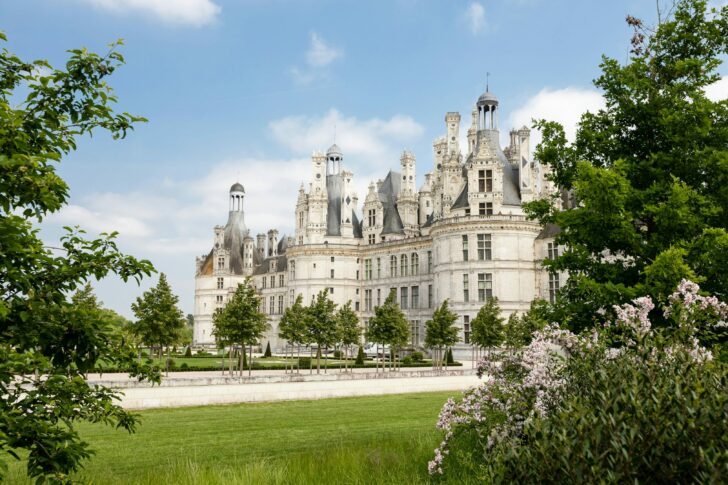
Beyond the chateaux, the Loire Valley is dotted with historic towns and villages that are steeped in culture and stories of the past. Orléans, with its heroic associations with Joan of Arc, and Blois, where medieval and Renaissance influences intertwine, are just the beginning of the valley’s urban treasures. Each town, with its cobblestone streets and architectural heritage, offers a different perspective on the rich tapestry of French history.
Immerse yourself in the romantic tales of the Loire Valley chateaux, such as the fateful meeting between Joan of Arc and the French Dauphin at Chinon or the passionate love affair between Rodin and Camille Claudel at Chateau de l’Islette. These stories add a layer of intrigue and human drama to the already captivating landscape, making each visit not just a tour, but a journey through time.
Wine Tasting in the Loire Valley
The allure of the Loire Valley is not limited to its historical monuments; the region is also a haven for oenophiles. With approximately 4000 wineries, the valley’s terroir yields a diverse array of wines, including:
Crisp whites
Robust reds
Sparkling wines
Sweet dessert wines
The wine region is divided into Upper, Middle, and Lower Loire, each offering distinct flavors influenced by the unique microclimates created by the Loire and its tributaries.
Embark on a sensory journey as you visit notable vineyards such as Domaine de Rocheville, Pierre & Bertrand Couly, and Domaine Gitton, where you can indulge in tastings and learn about the winemaking process from passionate vintners. Whether you prefer the minerality of a Sauvignon Blanc, the honeyed notes of a Chenin Blanc, or the crisp freshness of a Muscadet, the Loire Valley’s wines are sure to delight your palate and deepen your appreciation for France’s viticultural heritage.
Check out Loire Valley Full Day Wine Tour from Tours.
Natural Beauty and Outdoor Activities
The Loire Valley’s appeal extends beyond its chateaux and vineyards, offering a playground for nature enthusiasts and adventurers alike. The region’s diverse landscapes provide a stunning backdrop for a myriad of outdoor activities. Some of the highlights include:
Pays Nantais: Known for its igneous and metamorphic rocks, this area is perfect for hiking and rock climbing.
Saumurois: With its tuffeau limestone cliffs, this region is ideal for cycling and horseback riding.
Touraine: Home to the famous chateaux, this area is great for walking and exploring the historic sites.
In addition to these activities, the Maisons de Loire, dedicated to celebrating and preserving the valley’s natural heritage, offer guided tours, workshops, and exhibitions that showcase the river’s rich biodiversity and cultural impact.
Whether you’re walking along the banks of the Loire, cycling through the rolling countryside, or exploring the regional nature parks, the valley’s natural beauty is sure to captivate your senses. The interaction between the physical environment and human history is palpable, offering an experience of great beauty and an exceptional degree of connection with nature. Here, you’ll find not just a destination but an adventure, a place where the land itself tells a story of growth, change, and continuity in the beautiful villages.
Seasonal Events and Festivals
The Loire Valley is not only a feast for the eyes but also a celebration of culture, marked by a calendar teeming with events and festivals that reflect the region’s vibrant spirit. Some of the notable events and festivals in the Loire Valley include:
The colorful Carnival in March
The aromatic Asparagus Fair in May
The Rhododendron Festival, set amid the château grounds of Châteauneuf-sur-Loire, which ushers in spring with a flourish of blooms.
These events enchant visitors and locals alike, adding to the vibrant atmosphere of the region.
As the seasons turn, the valley continues to buzz with activity. Here are some events to look forward to:
Jargeau Plage offers summer fun for all ages
European Heritage Days in September open doors to cultural monuments and attractions
The grape harvest in autumn offers a unique experience
‘Christmas in the land of chateaux’ transforms the Touraine region into a wonderland of festive cheer
These events not only provide entertainment but also offer a window into the soul of the Loire Valley, its traditions, and its people.
Practical Travel Tips
Planning a visit to the Loire Valley? Consider timing your trip during the shoulder seasons of April to June or September to October. These periods promise milder weather, vibrant landscapes, and a respite from the throngs of tourists that summer attracts. For wine enthusiasts, these are also the ideal times to visit the wineries, with the chance to witness the grape harvest in the autumn months.
While the summer months offer the full array of outdoor activities, they also bring peak season crowds and higher prices, whereas winter provides a quieter, more contemplative experience, albeit with colder temperatures and limited options for outdoor exploration.
No matter when you choose to visit, the Loire Valley is a destination that rewards the thoughtful traveler, offering a tapestry of experiences that weave together the threads of history, culture, and natural beauty.
Summary
From the storybook chateaux perched along the Loire River to the rolling vineyards that produce some of the finest wines in the world, the Loire Valley encapsulates the essence of French elegance and heritage. This region, with its historic towns and villages, offers an experience that is both deeply rooted in the past and vibrantly alive in the present. Whether you are an avid historian, a wine connoisseur, or simply in search of beauty, the Loire Valley awaits with a promise of unforgettable memories. Let the timeless charm of this UNESCO World Heritage Site inspire your next adventure, and may the journey be as enchanting as the destination itself.
Frequently Asked Questions
What is the best way to travel to the Loire Valley from Paris?
The best way to travel to the Loire Valley from Paris is by car, taking about 3 hours, or by TGV (high-speed train) from Charles de Gaulle Airport to Tours or Angers, which usually takes around 1.5 hours.
Are there any notable events or festivals in the Loire Valley?
Yes, the Loire Valley hosts a variety of events and festivals throughout the year, such as the Carnival in March, European Heritage Days in September, and ‘Christmas in the land of chateaux’ in December.
Which chateaux in the Loire Valley are considered must-visit?
You must visit Château de Chambord, Château de Chenonceau, and Château de Villandry in the Loire Valley for their historical and architectural significance.
Can you recommend some wineries for wine tasting in the Loire Valley?
You should consider visiting Domaine de Rocheville, Pierre & Bertrand Couly, and Domaine Gitton for wine tasting in the Loire Valley. With around 4000 wineries in the region, you will have plenty of options to sample a diverse range of wines.
What natural outdoor activities can be enjoyed in the Loire Valley?
In the Loire Valley, you can enjoy guided nature tours, cycling, walking along the riverbanks, and exploring regional nature parks, as well as workshops and exhibitions focused on the river’s biodiversity and cultural impact. Enjoy a variety of outdoor activities in this picturesque region.
